Explore the fascinating world of birds with long beaks in this comprehensive guide. From the colorful keel-billed toucan to the stealthy grey heron, discover the top 10 unique species in this must-read article.
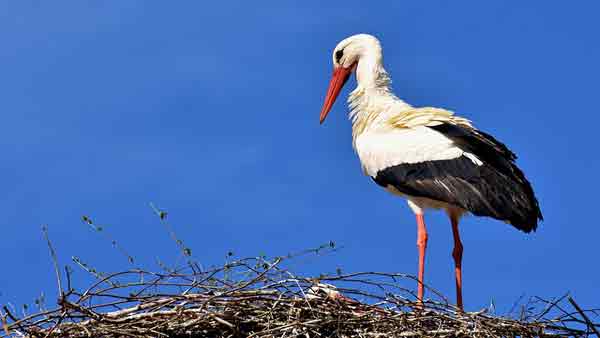
Birds with long beaks are fascinating creatures that have evolved unique and specialized beaks for various purposes, such as feeding, hunting, or courtship display.
In this article, we’ll explore the top 10 amazing birds with long beaks, including the Dalmatian pelican, reddish egret, white stork, long-billed curlew, roseate spoonbill, keel-billed toucan, sandhill crane, straw-necked ibis, grey heron, and Australian pelican.
Top 10 Birds with Long Beaks
1. Dalmatian Pelican – The Largest Bird in the Pelican Family
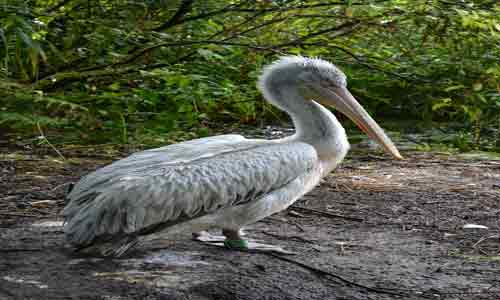
The Dalmatian pelican is the largest bird in the pelican family, and its long beak is a crucial tool for catching fish. With a wingspan of up to 11 feet, this bird is an impressive sight in flight.
Its beak Dalmatiann holds up to 3 gallons of water, which it uses to scoop up fish from the water. The Dalmatian pelican is also known for its distinctive throat pouch, which it uses to store and transport fish.
2. Reddish Egret – The Bird with a Passionate Courtship Display
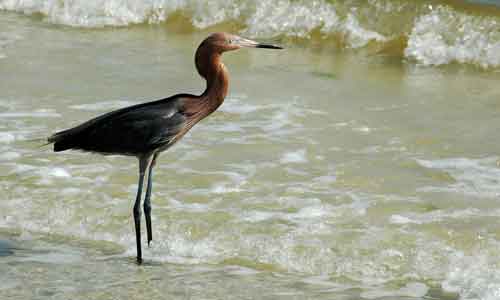
The reddish egret is a medium-sized heron found in coastal areas of North and South America. Its long beak is a crucial tool for catching fish and other aquatic prey, but it’s also usable in its courtship display.
During the presentation, the bird fluffs its feathers, spreads its wings, and dances around with its beak pointing skyward. The beak changes color during the show, from pale pink to bright red, adding to the bird’s dramatic appearance.
3. White Stork – The Symbol of Fertility and Good Luck

The white stork is a large wading bird found in Europe, Asia, and Africa. Its long beak helps catch small animals like frogs and insects and build its nest.
The white stork is also known as a symbol of fertility and good luck, and it’s a common sight in many cultures worldwide. In some cultures, a stork nesting on a roof signifies that a new baby will soon arrive.
4. Long-billed Curlew – The Bird with a Unique and Curious Beak

The long-billed curlew is a large shorebird found in grasslands and wetlands across North America. Its long beak is used to probe for food in the ground and helps defend itself from predators.
The curlew’s beak is unique and curious, with a downward curve that makes it look like a question mark. This bird is known for its distinctive call, heard from a distance of over a mile.
5. Roseate Spoonbill – The Bird with a Spoon-Shaped Beak for Feeding
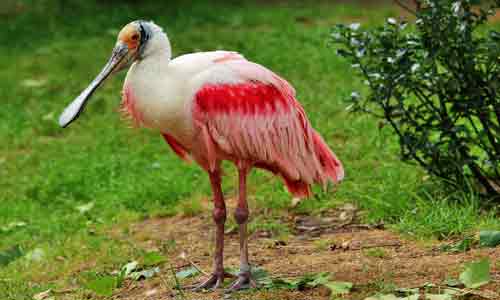
The roseate spoonbill is a large wading bird found in the Americas. Its spoon-shaped beak is a crucial tool for feeding, as it filters out mud and debris from its food.
The spoonbill’s beak is also sensitive to touch, which helps it detect prey in the water. This bird is known for its striking pink plumage, caused by pigments in the shrimp and other crustaceans it eats.
6. Keel-billed Toucan – The Bird with a Rainbow-Colored Beak
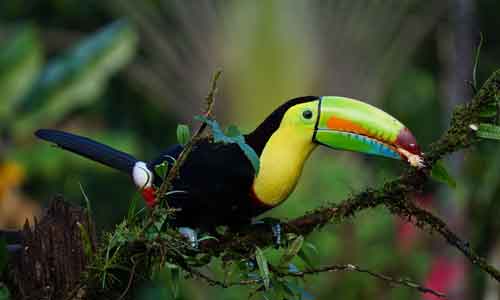
The keel-billed toucan is a colorful bird found in Central and South America. Its rainbow-colored beak is one of the most distinctive features of any bird, with shades of green, blue, and red.
The toucan’s beak is also lightweight and robust, allowing it to reach fruit and other food items that are out of reach for most birds. This bird is known for its playful and social nature, often seen in pairs or small groups in the wild.
7. Sandhill Crane – The Bird with a Distinctive Call

The sandhill crane is a large bird in North America, Europe, and Asia. Its long beak helps to forage for food in the ground and to catch small animals like insects and rodents.
During migration and breeding season, cranes frequently communicate with one another using their distinctive calls/flirts heard from more than a mile away. This bird is also known for its elaborate courtship dance, which involves jumping, bowing, and wing flapping.
8. Straw-Necked Ibis – The Bird with a Straw-Like Neck
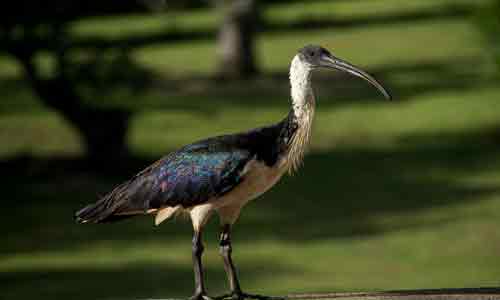
The straw-necked ibis is a large bird in Africa, Asia, and Australia. Its long beak helps to catch small animals like insects, fish, and crustaceans.
The ibis’s most distinctive feature is its straw-like neck, which is covered in long, thin feathers that give it a unique appearance. This bird is often seen in large flocks, roosting in trees, and foraging in fields and wetlands.
9. Grey Heron – The Bird with a Stealthy Hunting Style
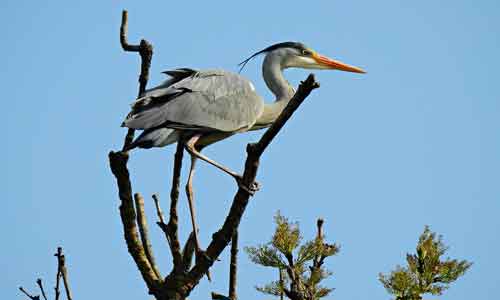
The grey heron is a large wading bird in Europe, Asia, and Africa. Its long beak assists in catching fish and other aquatic prey. It is applicable in a stealthy hunting style that involves standing still in shallow water and waiting for the game to come within striking distance.
The heron’s long legs and neck allow it to move quickly and silently through the water, making it a formidable hunter. This bird is also known for its graceful flight, soaring high in the sky with its long wingspan.
10. Australian Pelican – The Bird with a Large Bill Pouch
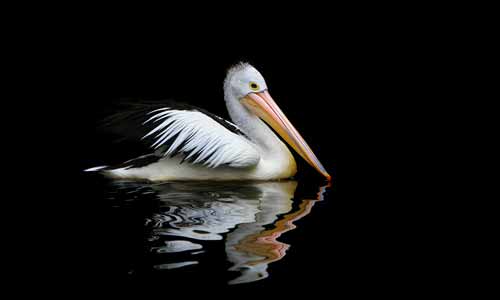
The Australian pelican is a large bird found in Australia, New Guinea, and Indonesia. Its long beak helps catch fish and is used to store and transport fish in its large bill pouch.
The pelican’s bill pouch can hold up to 13 liters of water, making it one of the largest bill pouches of any bird. This bird is also known for its impressive wingspan, reaching up to 3.4 meters in length.
Conclusion
Birds with long beaks are fascinating creatures with unique adaptations for survival. Each bird on this list is a marvel of evolution, from the Dalmatian pelican’s massive throat pouch to the keel-billed toucan’s rainbow-colored beak.
By exploring the top 10 amazing birds with long beaks, we hope to have inspired you to appreciate the beauty and complexity of these remarkable animals.
Also Read:-